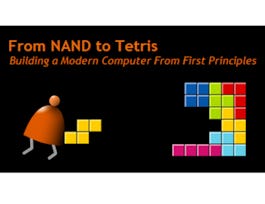With every smartphone and computer now boasting multiple processors, the use of functional ideas to facilitate parallel programming is becoming increasingly widespread. In this course, you'll learn the fundamentals of parallel programming, from task parallelism to data parallelism. In particular, you'll see how many familiar ideas from functional programming map perfectly to to the data parallel paradigm. We'll start the nuts and bolts how to effectively parallelize familiar collections operations, and we'll build up to parallel collections, a production-ready data parallel collections library available in the Scala standard library. Throughout, we'll apply these concepts through several hands-on examples that analyze real-world data, such as popular algorithms like k-means clustering.



Details to know

Add to your LinkedIn profile
See how employees at top companies are mastering in-demand skills


Earn a career certificate
Add this credential to your LinkedIn profile, resume, or CV
Share it on social media and in your performance review

There are 4 modules in this course
We motivate parallel programming and introduce the basic constructs for building parallel programs on JVM and Scala. Examples such as array norm and Monte Carlo computations illustrate these concepts. We show how to estimate work and depth of parallel programs as well as how to benchmark the implementations.
What's included
9 videos4 readings3 programming assignments
We continue with examples of parallel algorithms by presenting a parallel merge sort. We then explain how operations such as map, reduce, and scan can be computed in parallel. We present associativity as the key condition enabling parallel implementation of reduce and scan.
What's included
6 videos2 programming assignments
We show how data parallel operations enable the development of elegant data-parallel code in Scala. We give an overview of the parallel collections hierarchy, including the traits of splitters and combiners that complement iterators and builders from the sequential case.
What's included
5 videos2 programming assignments
We give a glimpse of the internals of data structures for parallel computing, which helps us understand what is happening under the hood of parallel collections.
What's included
5 videos2 programming assignments
Offered by
Why people choose Coursera for their career




Recommended if you're interested in Computer Science

Hebrew University of Jerusalem

Edureka

Google Cloud

Amazon

Open new doors with Coursera Plus
Unlimited access to 10,000+ world-class courses, hands-on projects, and job-ready certificate programs - all included in your subscription
Advance your career with an online degree
Earn a degree from world-class universities - 100% online
Join over 3,400 global companies that choose Coursera for Business
Upskill your employees to excel in the digital economy




